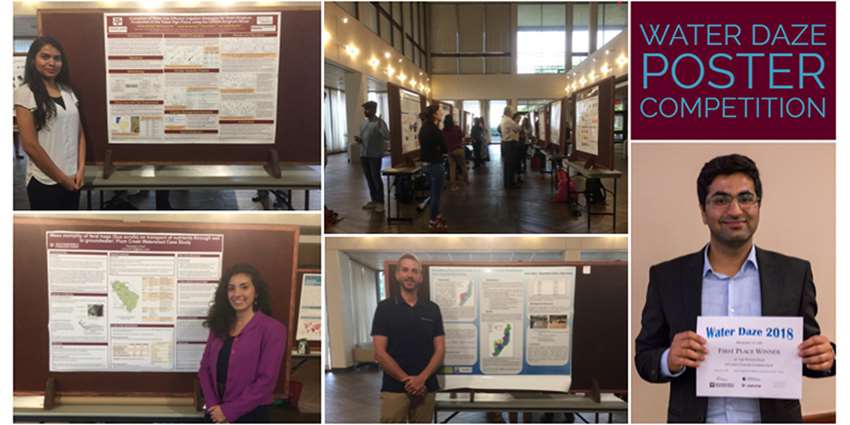Eighteen student posters with topics across a wide range of water-related issues were featured in the Water Daze poster competition April 3 on the Texas A&M University campus.
The poster competition was hosted by the Texas A&M Water Management and Hydrological Science (WMHS) program, an interdisciplinary program housed in the College of Geosciences.
The first-place poster was awarded to Vinit Sehgal, a doctorate student in the WMHS program. He presented on remote sensing for global soil moisture.
Sehgal’s research provided an estimate of global surface soil moisture canonical structures using remotely sensed surface soil moisture data from the NASA-SMAP (Soil Moisture Active Passive) satellite mission.
Tied for second place was Anna Gitter, doctorate student in the WMHS program, and Kritika Kothari, third year doctorate student in Texas A&M Department of Biological and Agricultural Engineering.
Gitter, who is also a Texas Water Resources Institute (TWRI) graduate research assistant, presented on the application of quantitative microbial risk assessment and microbial source tracking in assessing site-specific health risks.
Kothari, who was the only student participant outside of the WMHS program, presented on her research related to irrigation strategies for grain sorghum production in the Texas High Plains using the DSSAT (Decision Support System for Agrotechnology Transfer)-CERES (Crop Estimation through Resource and Environment Synthesis)-Sorghum model. She said she was encouraged by her department to submit to the competition and is glad she did.
“This has been a great way to connect with people and see their work, especially their takeaway on hydrology methods since they are in the WMHS program,” Kothari said.
Other participants, including Vanessa Limon, first year doctorate student in WMHS, said the Water Daze poster competition was a good way to get involved with the other students in the program.
“This competition is an interesting opportunity to see what other scientists and peers are researching,” Limon said.
Limon presented on the mass mortality of feral hogs on transport of nutrients through soil to groundwater as it pertains to the Plum Creek Watershed.
Limon said she decided on this topic because of how crucial it is to the state right now. With the need to control the feral hog populations, the effects on the soil and groundwater also need to be monitored.
The competition was judged by a team of faculty and other water professionals. First, second and third place winners received a monetary prize.
The event was sponsored by the WMHS program, TWRI, the Texas A&M University School of Law, and the Bush School of Government and Public Service.

